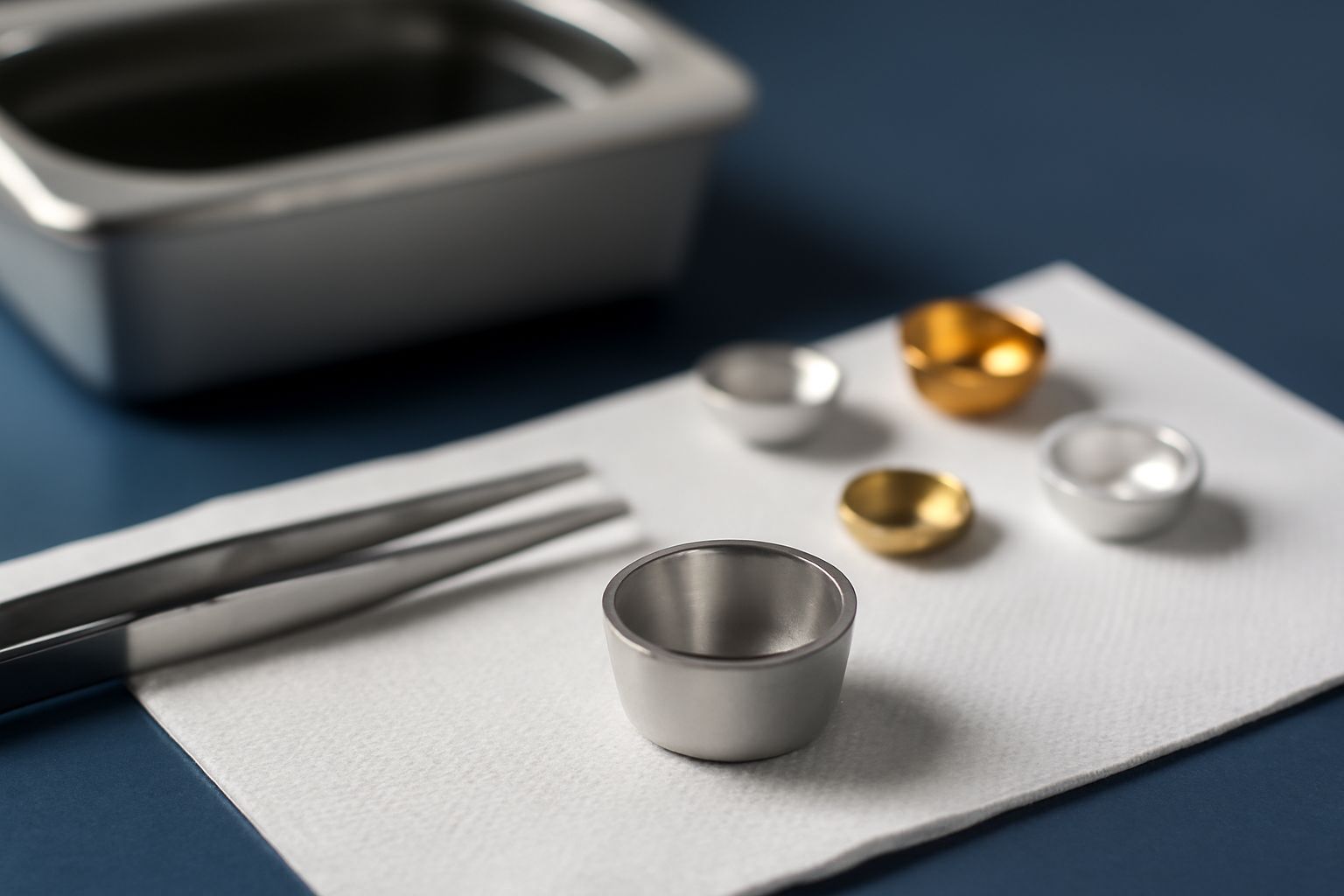Your cart is empty.
shop now
Your cart is empty.
shop now
Many labs seek to lower costs and support sustainability by reusing DSC consumables. Improper cleaning or poor storage will hurt testing accuracy and efficiency.
To maintain reliable results and lab safety, adopting proven cleaning and storage strategies for DSC pans and crucibles extends usability and improves cost-effectiveness in polymer testing.

Good habits and simple routines mean labs can avoid result drift and unexpected downtime. Efficient maintenance and careful use keep consumables performing well through multiple cycles.
Used DSC pans often show residue or impurities after tests. Fast cleaning methods or improper storage usually cause unreliable results and cross-contamination.
To reuse DSC pans, labs must follow proper washing, drying, and storage procedures. This removes sample residue and prevents unwanted reactions in future tests.
| Cleaning Step | Purpose | Reference |
|---|---|---|
| Sonic Bath or Solvent Rinse | Removes remaining materials and particles | Ultrasonic Cleaning |
| Manual Scrub (Soft Brush) | Dislodges stubborn debris without scratching metal surface | Cleaning Techniques |
| High-Temperature Drying | Dries pans and eliminates residual moisture | Drying Process |
| Airtight Storage | Protects from dust, humidity, and airborne contamination | Container |
I always use a sonic cleaner for pan wash, then check for any visible leftover. Keeping clean DSC pans in sealed containers on low shelves helps protect them from dust and accidental contact.
All DSC consumables will wear out over multiple uses. Physical changes or test errors signal when to remove items from service before they cause bigger issues.
Signs that show a pan or crucible needs replacement include visible cracks, warping, or regular baseline drift during DSC runs, all of which indicate their loss of function.
| Sign | What It Means | Resource |
|---|---|---|
| Cracks or Deformation | Possible sample leakage or inaccurate readings | Material Fatigue |
| Residue Build-Up | Leads to contamination between runs | Soiling |
| Baseline Instability | Errors in heat flow data, possible surface damage | Calorimetry |
| Corrosion or Staining | Decreases sample compatibility and metric reliability | Corrosion |
I regularly inspect pans and crucibles for small flaws after cleaning. Even a hairline crack may cause failed tests. Replacing consumables at the first sign of change keeps testing consistent and safe.
Small steps taken each day have big effects over time. Maintenance routines help avoid expensive replacements and reduce measurement errors from damaged pans.
Regular care and storage limit physical wear and chemical contamination, letting consumables perform well through repeat testing and cost less over extended use.
| Maintenance Task | Long-term Effect | Supporting Info |
|---|---|---|
| Gentle Handling | Prevents dents and microcracks | Metal Fatigue |
| Scheduled Inspection | Detects wear early and ensures timely replacement | Inspection |
| Proper Cleaning | Avoids chemical reactions and leftover debris | Sample Preparation |
| Correct Storage | Blocks dust and prevents accidental contact damage | Labware Storage |
I keep extra pans labeled and organized by usage count. Clear logs for each cycle let everyone in my lab know when to rotate or retire equipment. Good care routines stretch budgets while keeping test results precise.
Reusing DSC pans supports green targets, but unwanted risks also come with each extra cycle. Not all pans or crucibles prove reliable for repeat measurement.
If not tracked, wear, contamination, or hidden flaws will creep in with each reuse, causing poor accuracy, unexpected failures, or even hazard during operation.
| Risk | Possible Effect | Further Reading |
|---|---|---|
| Cross-contamination | Skews thermal profiles and data accuracy | Cross-contamination |
| Mechanical Failure | May damage equipment or interrupt tests | Mechanical Failure |
| Undetected Residue | Matrix effects and measurement errors across sample sets | Analytical Chemistry |
| Lab Safety Issues | Risk of leaks, spills, or overheating under test conditions | Laboratory Safety |
I review logs before every critical run and retire any suspect pans quickly. Preventing risks is as vital as saving costs. Learning the limits of each consumable keeps lab teams and results safe at all times.
Good cleaning habits, inspection, and storage extend DSC consumables’ life and data quality. Labs that track wear and evaluate risks enjoy stable and precise results in every polymer test.